Due to increasing globalization and the growing importance of Asian markets, the local languages in these regions are attracting brand attention. But how do they start operating on the Thai Market? Which Thai font do they choose for their branding localisation in Thailand?
Or if you just want to launch your business in Thailand, how do you select the right font for your brand?
It may seem like a small detail for you. However, the choice of your brand typeface – and your branding in general – may strongly impact your turnover.
So how can you process?
Firstly you have to understand the Thai spoken & written language particularities and the country’s culture.
Secondly, you need to have your Branding fundamentals.
Then you would be able to choose the right Thai font for your Branding. In function of the Thai typeface you would select, it gives different characteristics and meanings to the message you will be sharing.
1. Special features of the Thai language & typographical system
Thai is a language spoken by 60 million people in Thailand and around.
Like other languages, Thai has several different regional dialects depending on which parts of Thailand you are.
For example, the “Standard” Thai dialect is spoken in the Central Region, where Bangkok is located. Or the Isaan, a North-Eastern Thai dialect, which shares many similarities to the Laos language.
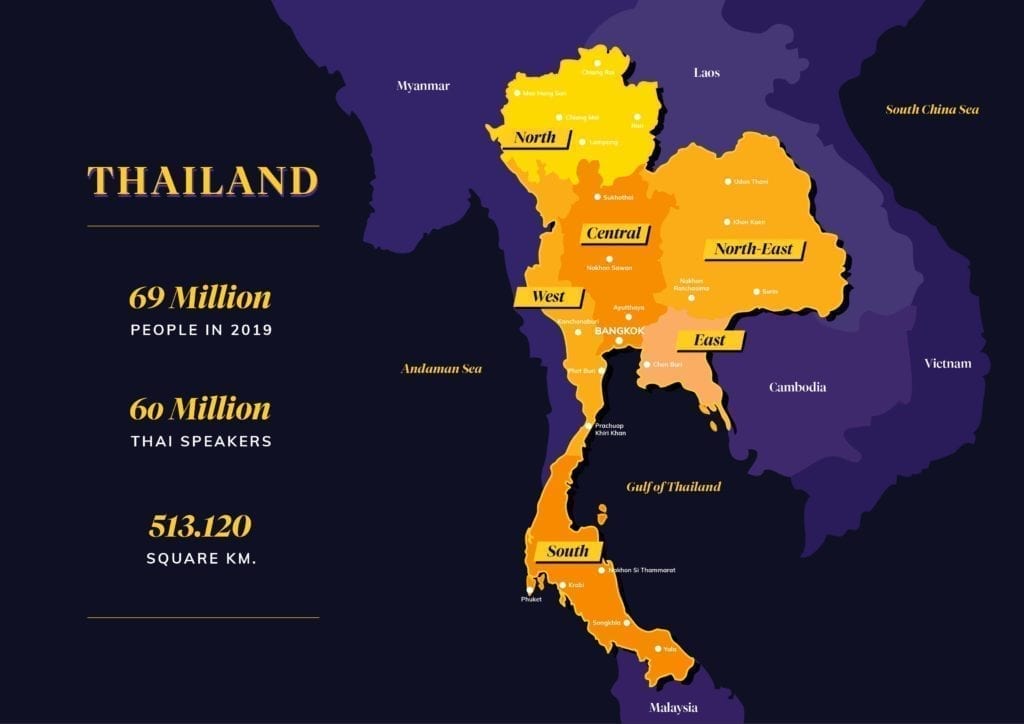
The Thai language is known for being complicated to learn, especially for people who are not Thai-native speakers.
Although some concepts are making the language more accessible, such as the fact that the verbs are invariable. That means that verbs have no temporality and no conjugation.
Some others are more difficult such as the layers of honorifications and the 5 different tones, which can be very subtle for Estearn foreigners.
When it comes to written language, many Thai-learners find it quite challenging due to the number of consonants, combined with the diphthongs which are those gliding vowels.
Unlike the typographic system of all Western languages, the Thai font is not purely alphabetic. As an Abugida, it lies between the syllabary and the alphabet.
The characters that make up a syllable are composed of fragments, as is the Devanagari, an Indian language.
Thai language is written from left to right and has 44 characters for the consonants.
Each consonant can be accompanied by a vowel that has three different types. They can be positioned above or below and to the right and left of the consonant. Indeed, there is no distinction between lower and upper cases in Thai written language.
In contrast to the English Language, spaces between words are rarely present in Thai written language. Indeed, different terms are written consecutively, and spaces are used for separating different sentences.
To better understand, here is a concrete and visual example of the sentence “I am hungry”
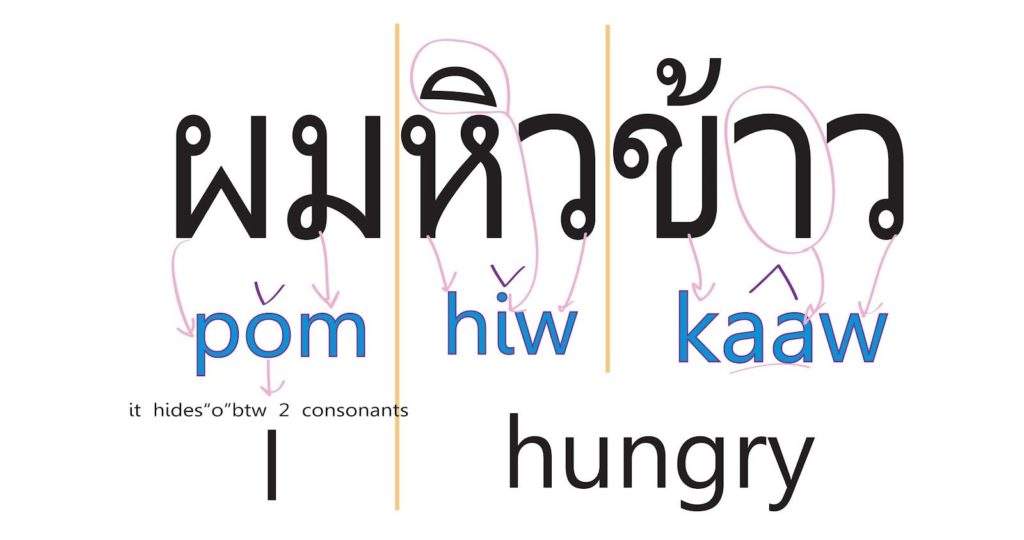
1st Syllable : High Class Consonant (ผ) + Short Vowel (o) + Sonorant Final (ม) = Rising Tone
2st Syllable : High Class Consonant (ห) + Short Vowel (ิ) + Sonorant Final (ว) = Rising Tone
3st Syllable : High Class Consonant (ข) + High tone mark (้) = Falling Tone
2. The Thai font particularities
A particularly typical feature of the Thai fonts is its small circle-shaped line endings, which come from the Traditional Thai written language. They aimed to improve readability.

Anuthin Wongsunkakon, a font designer, compares these circle endings to the serifs of the Latin alphabet.
He used this similarity to create a particular font that can display both Thai and Latin characters without losing unicity and readability: The Helvetica font. It is the perfect harmony between the Latin original alphabet and the modern Thai font with its sober and unadorned design.
Helvetica Thai font:

By the way, you can download this font in the Ressources part at the end of this article.
In recent years, however, more and more modern fonts have been appearing without these circle endings, and reading habits have begun to change.
The familiarization and acceptance of this new form of Sans serif letters have yet taken a few decades.
The renunciation of Thai traditional decorative endings opened up entirely new typographic horizons. That made it possible to assign Thai correspondence to Latin sans serif fonts- in other words; without small circle-shaped line endings.
Multinational companies such as Apple, take advantage of this kind of modern font. They use their unique in-house developed font and adapt it in Thai and in all languages.
On Apple’s website, the text font is the same “SF pro text”, for both languages.

This “technique” allows them to have a consistent and international branding identity and therefore to have an easier Localization.
But what is exactly Brand Localization?
3. Branding Localisation Strategy.
A. Definition
Brand Localizationning is a branding process to adapt the brand identity in function of the targeted market. This process incorporates both transcreation, including the font of your logo or on your website, and translation.
The aim is to adapt a message to a specific culture and language to reach people more efficiently.
But before deciding which Thai font you want for your Brand, you should have defined your Branding firstly. It means having a clear idea of your branding strategy, your Brand’s position on the market, your name and your targeted audience.
Once you have your branding foundations, you can start working on your branding identity, which will be composed of your logo, your colors and your font.
These three components will constitute your Brand Guideline.
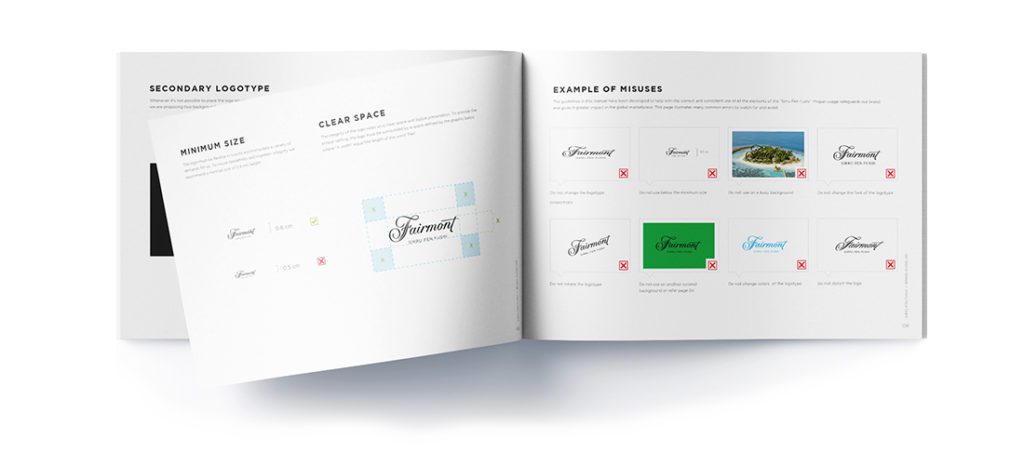
For example, If you are running a start-up company specialized in tech proposing online products to young adults, a modern font displayable on multiple platforms – computers, tablets, and smartphones – would be a great choice to make.
You might even go further by using a font that can serve your business efficiently, as several environmentally-friendly corporations are doing.
They have been thinking about making their fonts thinner to reduce their environmental impact. This “hack” allows them to display more letters in the same space than normal ones.
Therefore it enables them to use ink and paper sparingly when it comes to printing out materials, such as packaging or brochure.
The cherry on the cake: it reduces their costs while enhancing their branding identity by setting an example themselves.
Now, you have to choose your own strategy.
B. The Strategy
Firstly, it will depend on what you like to do concerning your Localization Branding Process.
Either you can choose a displayable both in Thai script and English alphabet font, such as Apple on their website. Consequently, it would allow you to have an International Branding, but possibly less impact on your targeted local market.
Or you can use a specific Thai font to enhance your Localization branding process and thus share a more efficient message to your targeted audience, but surely requires more work.
Other settings have to be taken into account, such as the online presence of your company, your advertisement strategy, needs in printing materials etc.
4. Which Thai Font should you use?
As other written languages, Thai font has its numeric versions that can be divided into 3 categories – to make things easier:
– The Thai Serif fonts are the ones with decorative strokes that finish off the letters “feet”. And generally you find the little “circles” of the Thai traditionnel font.
– The Sans Serif fonts are those without the decorative stroke. It may have the Thai traditional circles but that is rare.
– Highly artistic fonts that are usually often used in Branding and Marketing due to their handwritten style.
That is easier to show you the difference between Serif and Sans Serif font with images. The Serifs are surrounded in red colour.

As you can see, the decorative strokes can be subtle.
They are even more subtle on Thai Font:

And then here is an example of highly artistic fonts:

Each Font specificities are going to be explained in the following parties.
A. Thai Serif fonts
They are commonly used in official documents because it is easily readable. Moreover, it is impossible to confuse it with other alphabets.
For example, the most popular among the 13 thai fonts of the SIPA Thailand’s National fonts project is the Sarabun Font.
Designed by Suppakit Chalermlarp, this font was chosen by the royal government to be the official typeface for documentation, because Sarabun font fits perfectly with the long and very formal text.

Today, this font is among the most well-known loop typefaces in Thailand, since it displays a neutral Thai traditional loop design, and therefore fits in with any occasion.
Another exemple: on the Thai government website, the Helvetica neue is used.
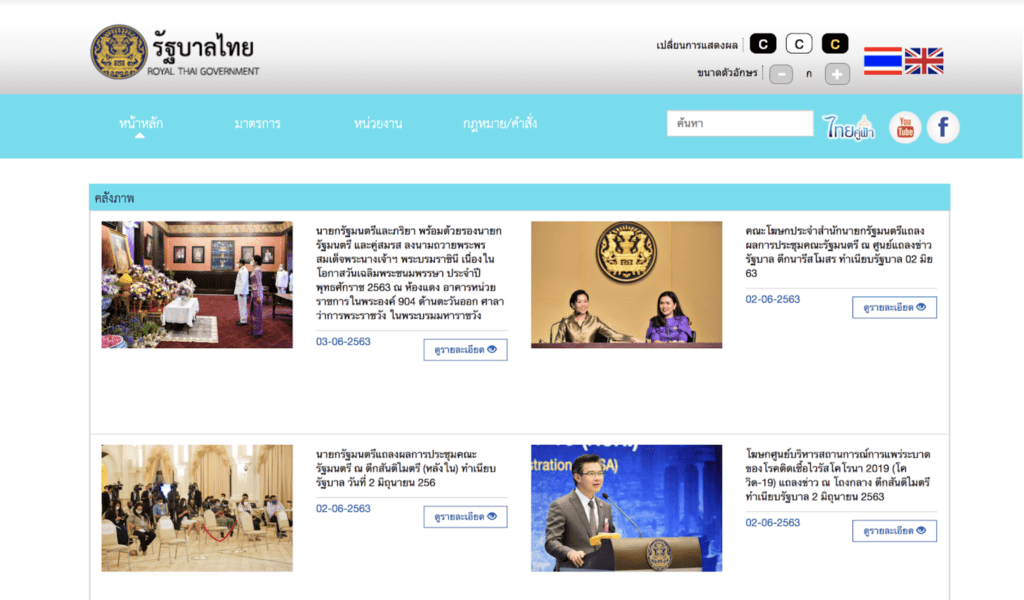
Thai Serif fonts are also a common choice in printed materials. Even though we live in an increasingly digital world, printing is still relevant and essential for many businesses.
Many Thai Serif fonts are suitable for printing because they are easy to read especially when the displayed text is very dense.
Consequently, if you have a business that requires printing, such a Hotel company that must have brochures and stationeries, you should consider Thai Serif fonts.
B. Sans Serif Fonts
On the contrary, Sans Serif fonts are more elegant, sober, and modern. They would be, therefore, interesting when it comes to online communication because they are easy to adapt to multiple platforms.
Consequently, they are more frequently used by modern brands and companies from the private sector with an essential online presence, such as Lub d.
They are also often used for Logo designs:
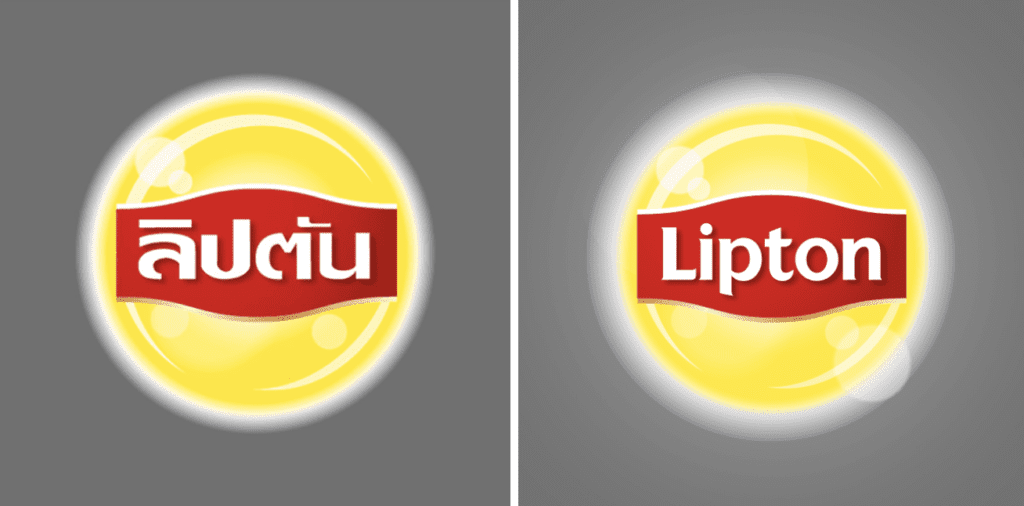
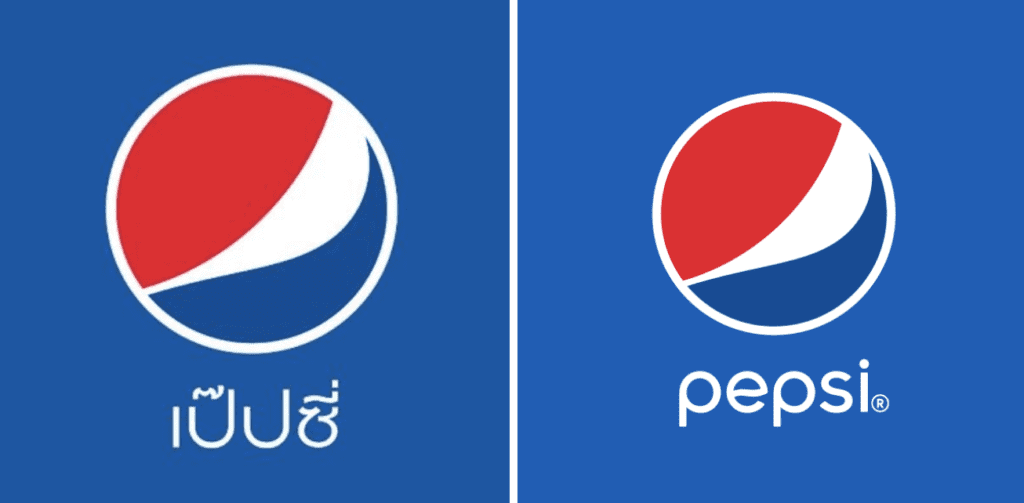
The Kanit font, designed by the Cadson Demak company, is a great choice and a popular thai font. By the way, we are currently using it for our Thai version website:

Athiti font and Mitr font are also interesting Thai Serif typefaces that you can use for your website. You can even use these fonts for your PowerPoint design, E-book…
C. Artistic Fonts
In addition to these previous fonts, you can also choose a creative font with a handwritten style. This type of font is commonly used for the letterhead or cover of a brochure because it gives a more lively, informal, and dynamic impression. However, it would probably not be optimal for very long texts.
In this style, we have the Chonburi Thai Font, which is artistic, impactful and readable:

We used an artistic font for Yummix. This brand sells desserts for children:
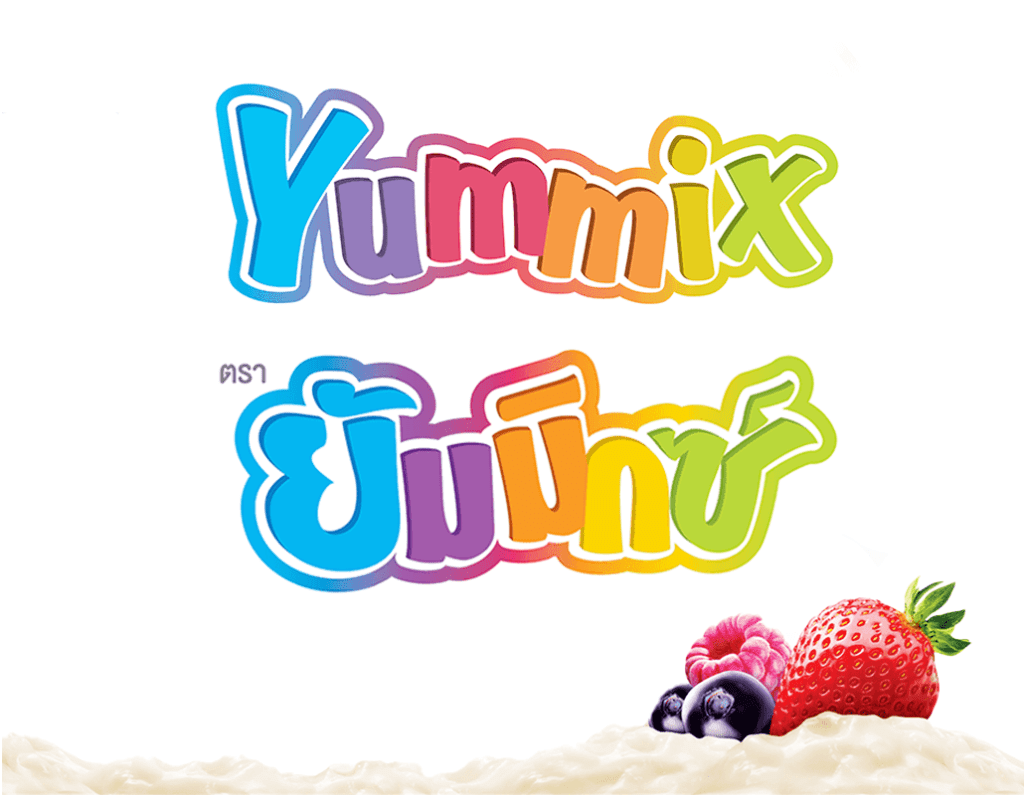
Therefore, we wanted to have a font that looked like it was written by a child. As you can see, the typefaces are not symmetric and really curved.
In addition, the letters are multicolour and broad to enhance the children’s written impression.
5. Font Family: variations of a same font
Once you have selected your Font, do not forget that you will have access to all the typefaces variation of the font family.
A font family gathers all the variations of the same font.
Indeed, if you take the kanit typeface as an example, there are the kanit extralight, kanit light, kanit regular, kanit medium, kanit semibold, the kanit bold, kanit extrabold etc…
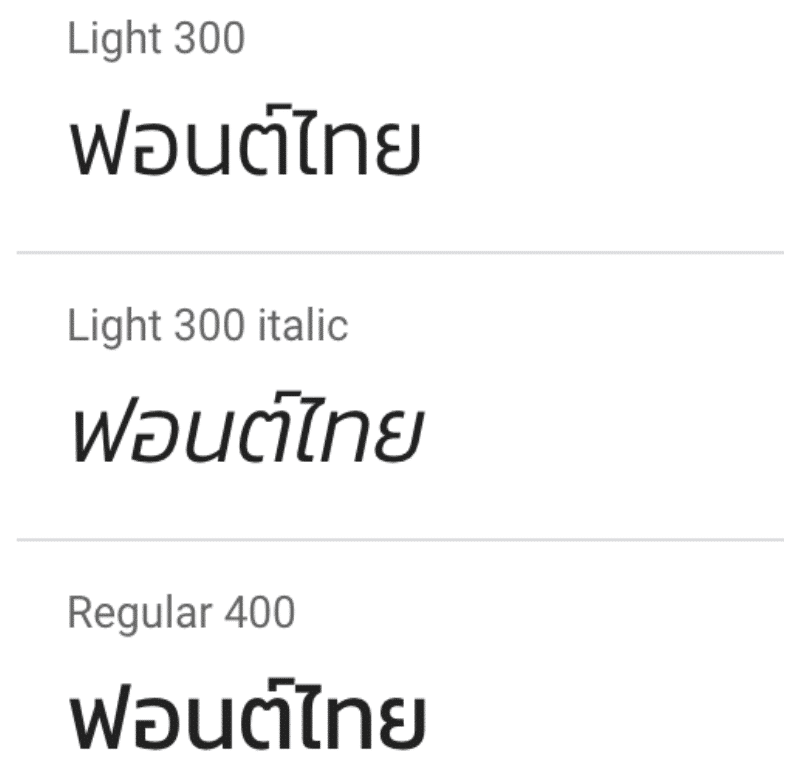
The choice is broad, and you will have it for all the popular typefaces. It is up to you.
We advise you to stay simple and to be consistent and coherent.
To conclude, we have selected some resources to help you to find the brand fonts which would perfectly match your Brand Identity. Or you might hire Branding Specialists who would be able to create your Brand and therefore to select the optimal font to make your Business Successful.
Ressources
Before using a font, remember that you need to check first the font copyright. You can find hundreds of available Thai fonts to download.
We are proposing a list of beautiful Thai font families to download for free that can be interesting for your brand:
– Download free Sarabun font: https://fonts.google.com/specimen/Sarabun
– Download free Kanit font: https://fonts.google.com/specimen/Kanit?subset=thai
– Download free Athiti font: https://fonts.google.com/specimen/Athiti
– Download free Mitr font: https://fonts.google.com/specimen/Mitr
– Download free Chonburi font: https://fonts.google.com/specimen/Chonburi?subset=thai
– More free fonts on Google font: https://fonts.google.com/?subset=thai
Payable Thai Font to download:
– Download Helvetica font: https://www.fonts.com/font/linotype/helvetica-thai/complete-family-pack
